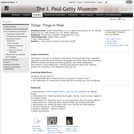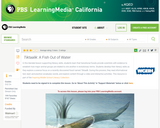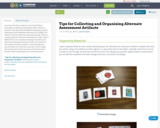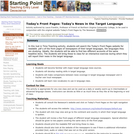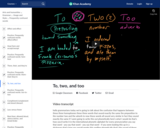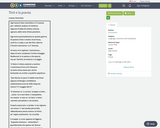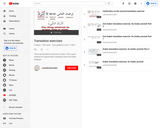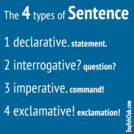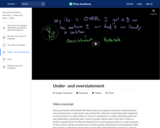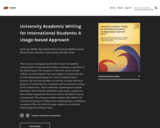Ogn'anno,il due novembre,c'é l'usanzaper i defunti andare al Cimitero.Ognuno ll'adda fà chesta crianza;ognuno adda tené chistu penziero.Ogn'anno,puntualmente,in questo giorno,di questa triste e mesta ricorrenza,anch'io ci vado,e con dei fiori adornoil loculo marmoreo 'e zi' Vicenza.St'anno m'é capitato 'navventura...dopo di aver compiuto il triste omaggio.Madonna! si ce penzo,e che paura!,ma po' facette un'anema e curaggio.'O fatto è chisto,statemi a sentire:s'avvicinava ll'ora d'à chiusura:io,tomo tomo,stavo per uscirebuttando un occhio a qualche sepoltura."Qui dorme in pace il nobile marchesesignore di Rovigo e di Bellunoardimentoso eroe di mille impresemorto l'11 maggio del'31"'O stemma cu 'a curona 'ncoppa a tutto......sotto 'na croce fatta 'e lampadine;tre mazze 'e rose cu 'na lista 'e lutto:cannele,cannelotte e sei lumine.Proprio azzeccata 'a tomba 'e stu signorence stava 'n 'ata tomba piccerella,abbandunata,senza manco un fiore;pe' segno,sulamente 'na crucella.E ncoppa 'a croce appena se liggeva:"Esposito Gennaro - netturbino":guardannola,che ppena me facevastu muorto senza manco nu lumino!Questa è la vita! 'ncapo a me penzavo...chi ha avuto tanto e chi nun ave niente!Stu povero maronna s'aspettavaca pur all'atu munno era pezzente?Mentre fantasticavo stu penziero,s'era ggià fatta quase mezanotte,e i'rimanette 'nchiuso priggiuniero,muorto 'e paura...nnanze 'e cannelotte.Tutto a 'nu tratto,che veco 'a luntano?Ddoje ombre avvicenarse 'a parte mia...Penzaje:stu fatto a me mme pare strano...Stongo scetato...dormo,o è fantasia?Ate che fantasia;era 'o Marchese:c'o' tubbo,'a caramella e c'o' pastrano;chill'ato apriesso a isso un brutto arnese;tutto fetente e cu 'nascopa mmano.E chillo certamente è don Gennaro...'omuorto puveriello...'o scupatore.'Int 'a stu fatto i' nun ce veco chiaro:so' muorte e se ritirano a chest'ora?Putevano sta' 'a me quase 'nu palmo,quanno 'o Marchese se fermaje 'e botto,s'avota e tomo tomo..calmo calmo,dicette a don Gennaro:"Giovanotto!Da Voi vorrei saper,vile carogna,con quale ardire e come avete osatodi farvi seppellir,per mia vergogna,accanto a me che sono blasonato!La casta è casta e va,si,rispettata,ma Voi perdeste il senso e la misura;la Vostra salma andava,si,inumata;ma seppellita nella spazzatura!Ancora oltre sopportar non possola Vostra vicinanza puzzolente,fa d'uopo,quindi,che cerchiate un fossotra i vostri pari,tra la vostra gente""Signor Marchese,nun è colpa mia,i'nun v'avesse fatto chistu tuorto;mia moglie è stata a ffa' sta fesseria,i' che putevo fa' si ero muorto?Si fosse vivo ve farrei cuntento,pigliasse 'a casciulella cu 'e qquatt'ossee proprio mo,obbj'...'nd'a stu mumentomme ne trasesse dinto a n'ata fossa"."E cosa aspetti,oh turpe malcreato,che l'ira mia raggiunga l'eccedenza?Se io non fossi stato un titolatoavrei già dato piglio alla violenza!""Famme vedé..-piglia sta violenza...'A verità,Marché,mme so' scucciato'e te senti;e si perdo 'a pacienza,mme scordo ca so' muorto e so mazzate!...Ma chi te cride d'essere...nu ddio?Ccà dinto,'o vvuo capi,ca simmo eguale?......Muorto si'tu e muorto so' pur'io;ognuno comme a 'na'ato é tale e quale"."Lurido porco!...Come ti permettiparagonarti a me ch'ebbi nataliillustri,nobilissimi e perfetti,da fare invidia a Principi Reali?"."Tu qua' Natale...Pasca e Ppifania!!!T''o vvuo' mettere 'ncapo...'int'a cervellache staje malato ancora e' fantasia?...'A morte 'o ssaje ched''e?...è una livella.'Nu rre,'nu maggistrato,'nu grand'ommo,trasenno stu canciello ha fatt'o puntoc'ha perzo tutto,'a vita e pure 'o nomme:tu nu t'hè fatto ancora chistu cunto?Perciò,stamme a ssenti...nun fa''o restivo,suppuorteme vicino-che te 'mporta?Sti ppagliacciate 'e ffanno sulo 'e vive:nuje simmo serie...appartenimmo à morte!"
